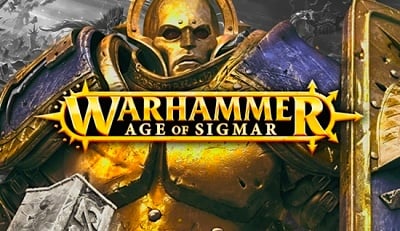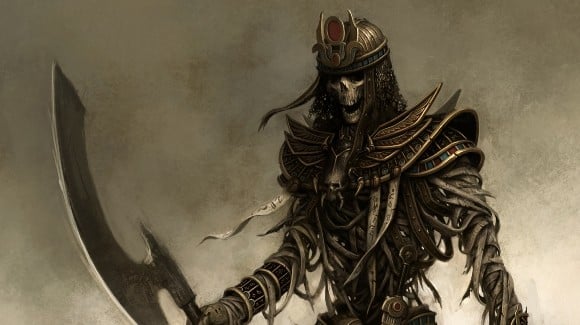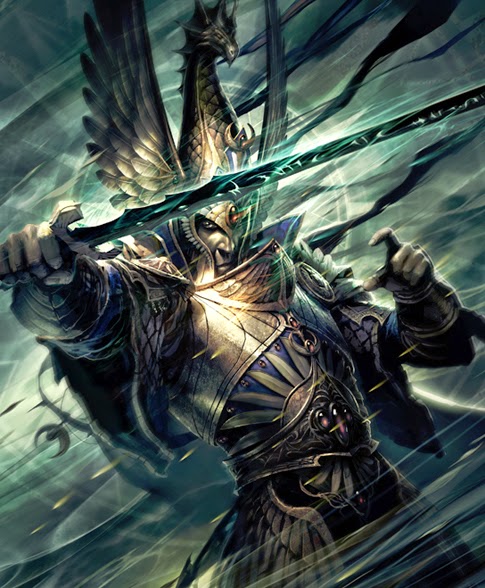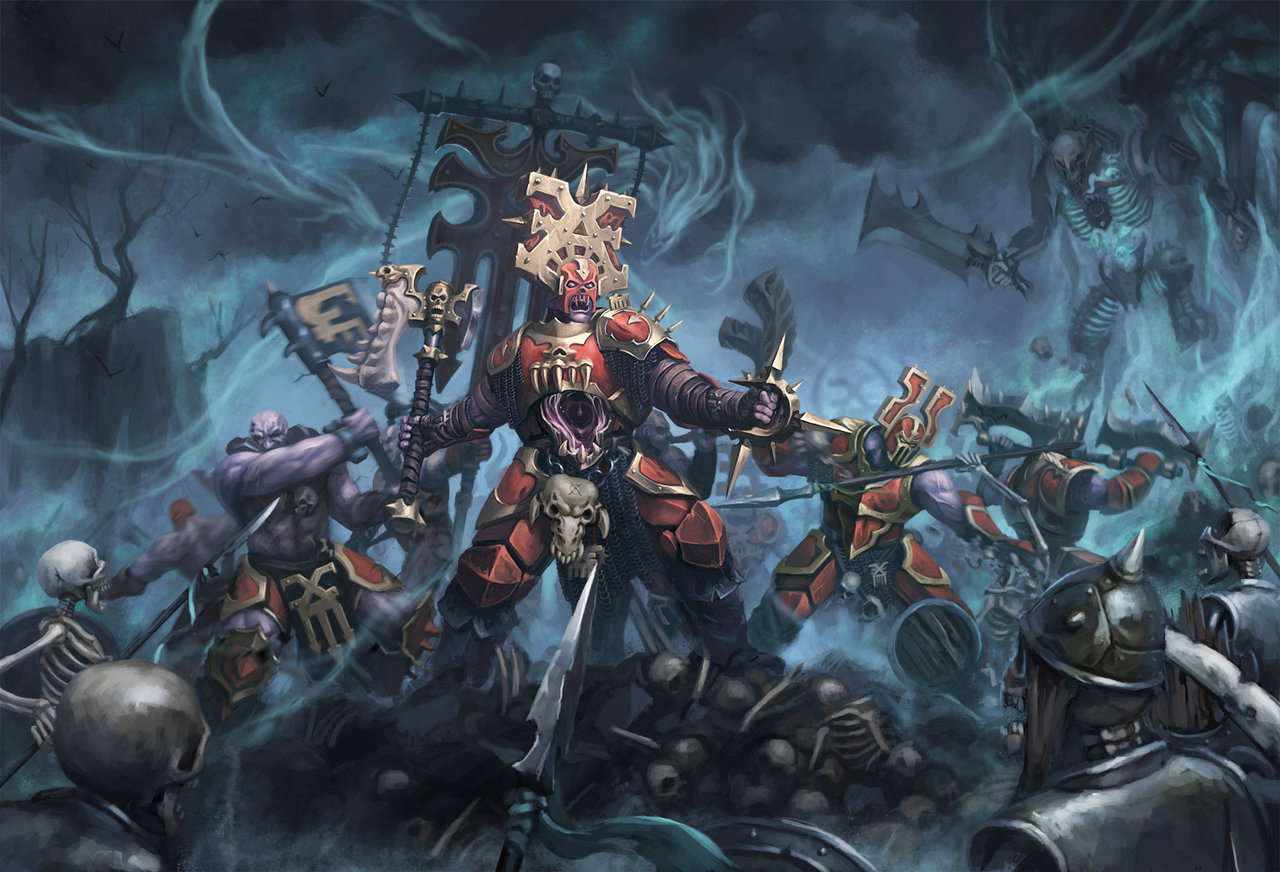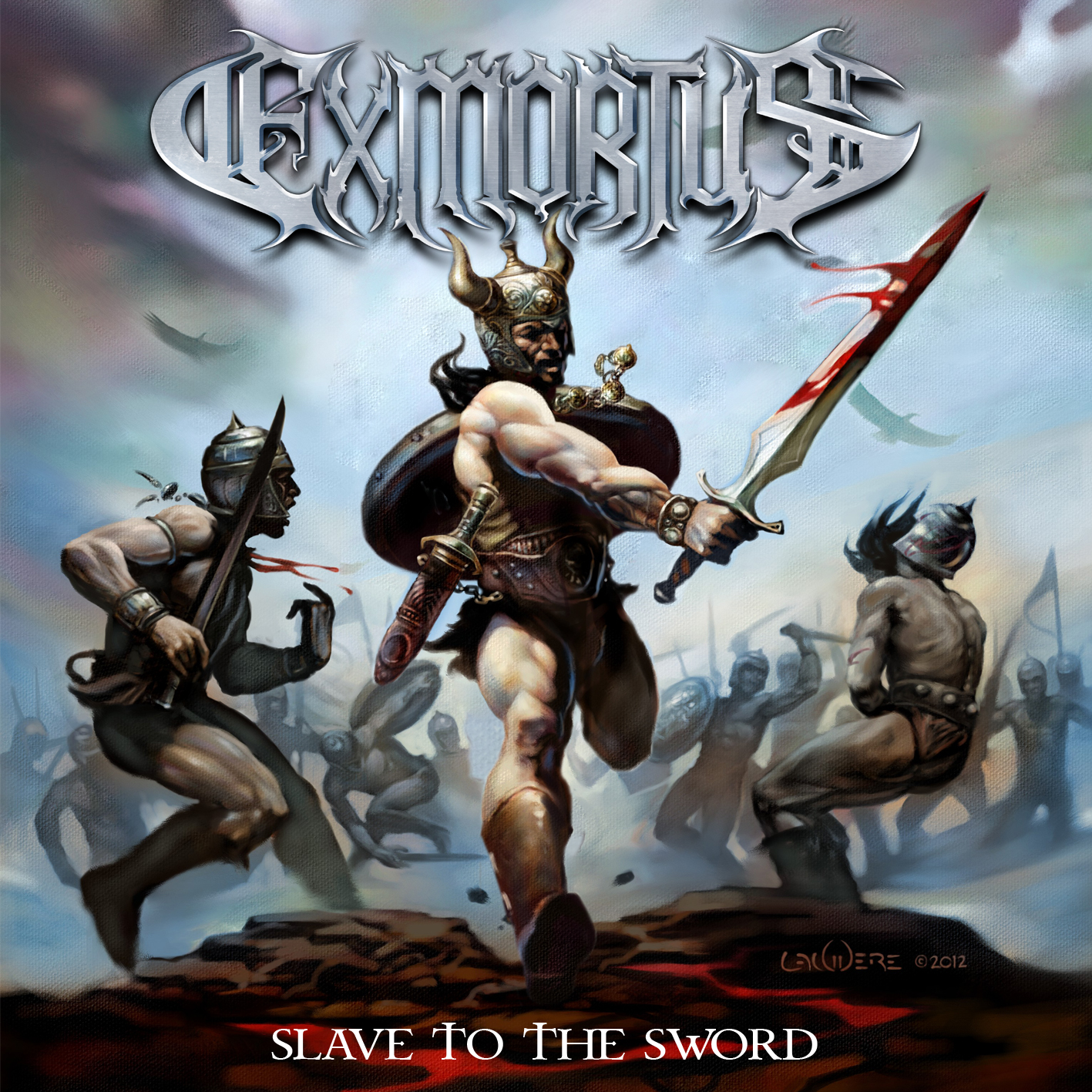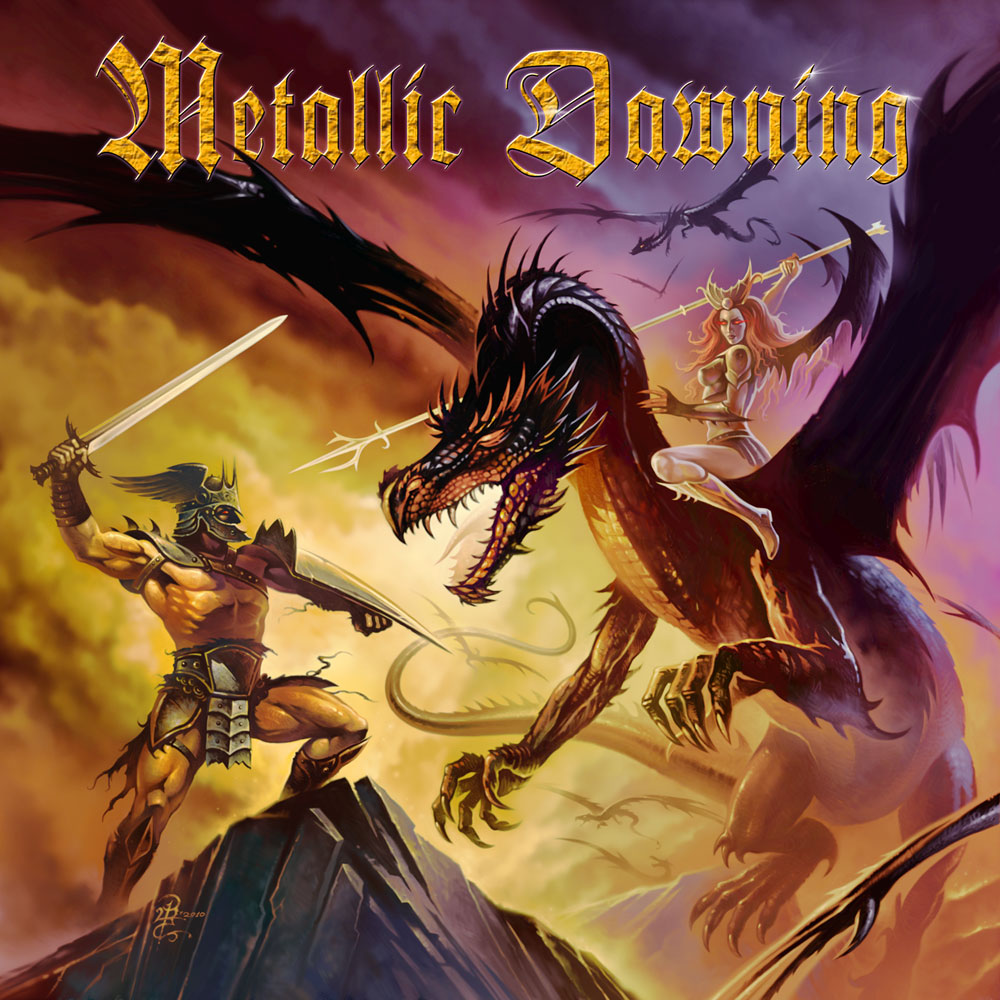Editorial: Age of Sigmar – The Golden Opportunity
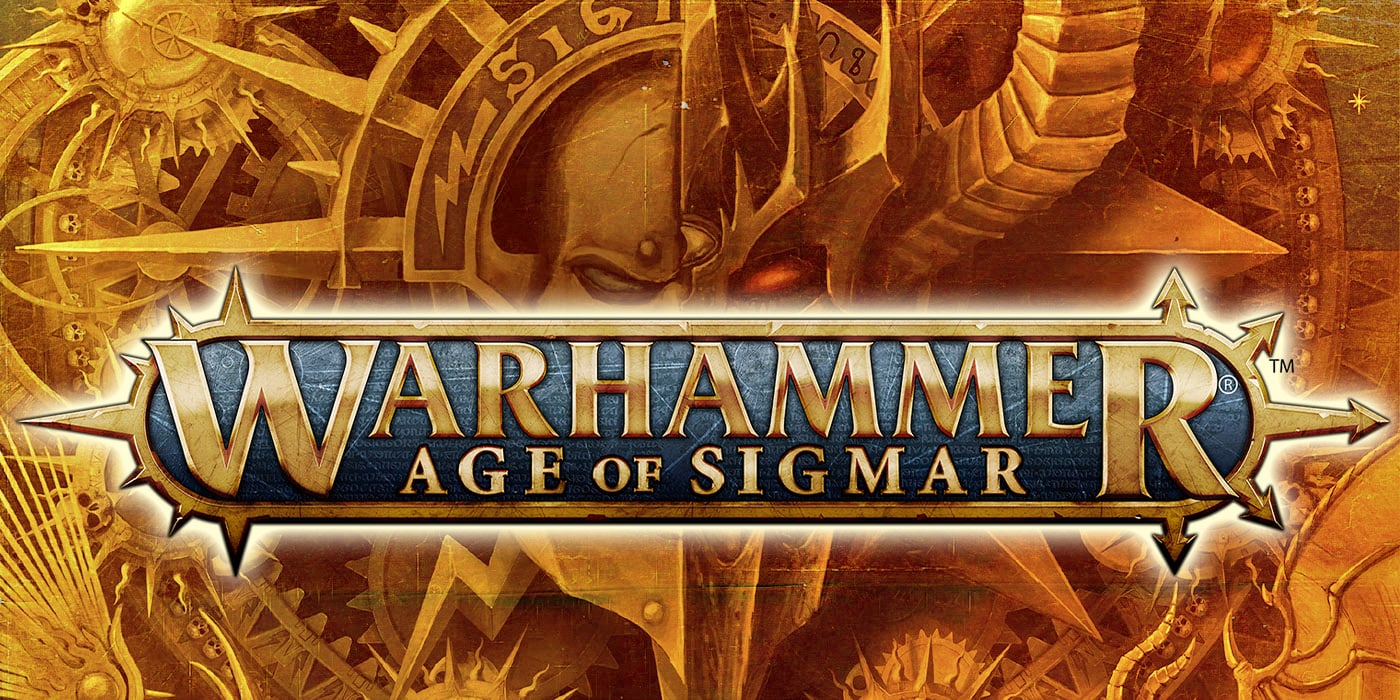

One Optimistic Gamer’s look at the current state of Age of Sigmar.
Why Age of Sigmar is Secretly Great
There is still a lot of lingering negativity around Age of Sigmar, much of it rightly so. However, I believe a lot of players out there are missing out on the fact that Age of Sigmar is the single greatest opportunity for gamers and hobbyists since Warhammer first launched in 1983.
Now Age of Sigmar is by no means flawless; the lack of points values is a major, MAJOR hindrance to organized or even remotely balanced play. Half the old fantasy models haven’t been updated, the other half have been squatted ad infinitum, and the background fiction is still in the throws of adolescence.
However….that leaves a vast, unexplored wilderness of a game just waiting for your personal touch as a hobbyist and a gamer. Barring competitive events – at least until an official points system is adopted – you can do almost anything with both your models and your battlefield. Every realm in the Age of Sigmar hosts mortal hosts of every color and creed. The remnants and survivors of the Warhammer world still exist- at least in rules form for many of your favorite characters (they may not be updated, and may be canonically dead, but you can still use them!) and if you’re not happy with your favorite character being dead, you can sure counts-as them into a character of your own invention.
It’s clear from the fiction of Age of Sigmar that structures, races, and even some characters like Malekith, Nagash, Tyrion, etc. survived the End Times, which makes Age of Sigmar a post-apocalyptic fantasy game. The possibility to make your own, personal army a bedraggled, worn-down, hard-bitten group of survivalists from the Old World is entirely possible… and wholly awesome.
Old World Survivors
The story of a survivor is one of hope, loss, endurance, and defiance. At the End Times, few survived to see the new iteration of the world. Some that did became gods incarnate in the Age of Myth, and onwards into the Age of Sigmar. However, Gods are boring- what really matters is the lives of men, woman, and monsters who managed to crawl their way out of the wreckage of a world rent by Chaos. Half of the fun of Age of Sigmar is how much of it is left open to interpretation. Even if your favorite army was squatted (Bretonnians, Tomb Kings), if you have your old models, or can find them cheap on eBay, they’re still playable with the Warscroll rules downloadable from GW online. Making a motley band of hard-bitten Bretonnian survivors, still trying to uphold their chivalric honor while at the same time exploring a post-cataclysmic new world is a very compelling story indeed. With a little creativity you can imagine such a scenario for almost any force. The Empire’s best Engineering College minds who built a device that protected them from the fallout of Chaos, a tribe of Ogors (Ogres) who hid within the Great Maw, digging their way out into a new Realm ripe with opportunity, a tribe of Amazons from Lustria (remember them?) mysteriously reborn into the Realm of Ghur, the list goes on and the opportunities for conversions, character, and even basing schemes is almost endless.
New Powers Rising
Of course, with most of the Old World’s major players dead, retconned, or god-ified, there is a serious power vacuum in the Age of Sigmar. Mortals in every realm are beset by dangers on all sides, warlords vie for dominance, and bloodshed is a constant. So why not take advantage of it? With the rules available to you through downloadable warscrolls and the official rulebooks in Age of Sigmar, an intrepid player can literally carve out their own kingdom in any Realm, and create an army of mortal humans, aelfs, duardin or any other race – Much like the Border Princes of Warhammer Fantasy. Mercenaries, pirates, tribesmen, all are doable in Age of Sigmar because nothing has been set in stone yet. And that is the beauty of the setting.
Keeping the Tone
I think the biggest question so many players have had is: “what makes Age of Sigmar, well…Age of Sigmar?” Warhammer Fantasy’s world was defined by its relation to the real world, our Earth. Each location more or less matched up to a real continent or country, and took influences from this as well as from popular fiction – Lustria was South America and Lizardmen held a very Mayan/Aztec aesthetic, the Empire was Renaissance-era Germany, Chaos was Norway/Sweden Viking inspired, Vampire Counts occupied cliche-as-holy-hell Translyvania, etc. Likewise, Warhammer 40,000 is defined by its over-the-top Gothic architecture (Warhammer Fantasy shared this, but often to a lesser extent), abundant skulls in everything, and John Blanche inspired weirdness.
That is NOW, however. Back in the early days of both games in the mid-80s, much of their aesthetic was inspired by Heavy Metal album covers – epic scenes of warriors in battle on hellish landscapes with lightning in the air. Norse mythology, blood and death were common factors, and this…THIS, ladies and gentlemen and orcs, is what Age of Sigmar has gone back to. And, despite its more marketable kid-friendly nature (we KNOW you wanted your daemonettes to have six breasts, we get it), it is every bit as epic as its forebears. We’re living in the new Golden Age with this game, something that is lost on so many people – it’s whatever you want it to be, with an aesthetic that’s a little bit old Fantasy, a little bit Jason and the Argonauts, and a lot of Heavy Metal sword and sorcery awesomeness.
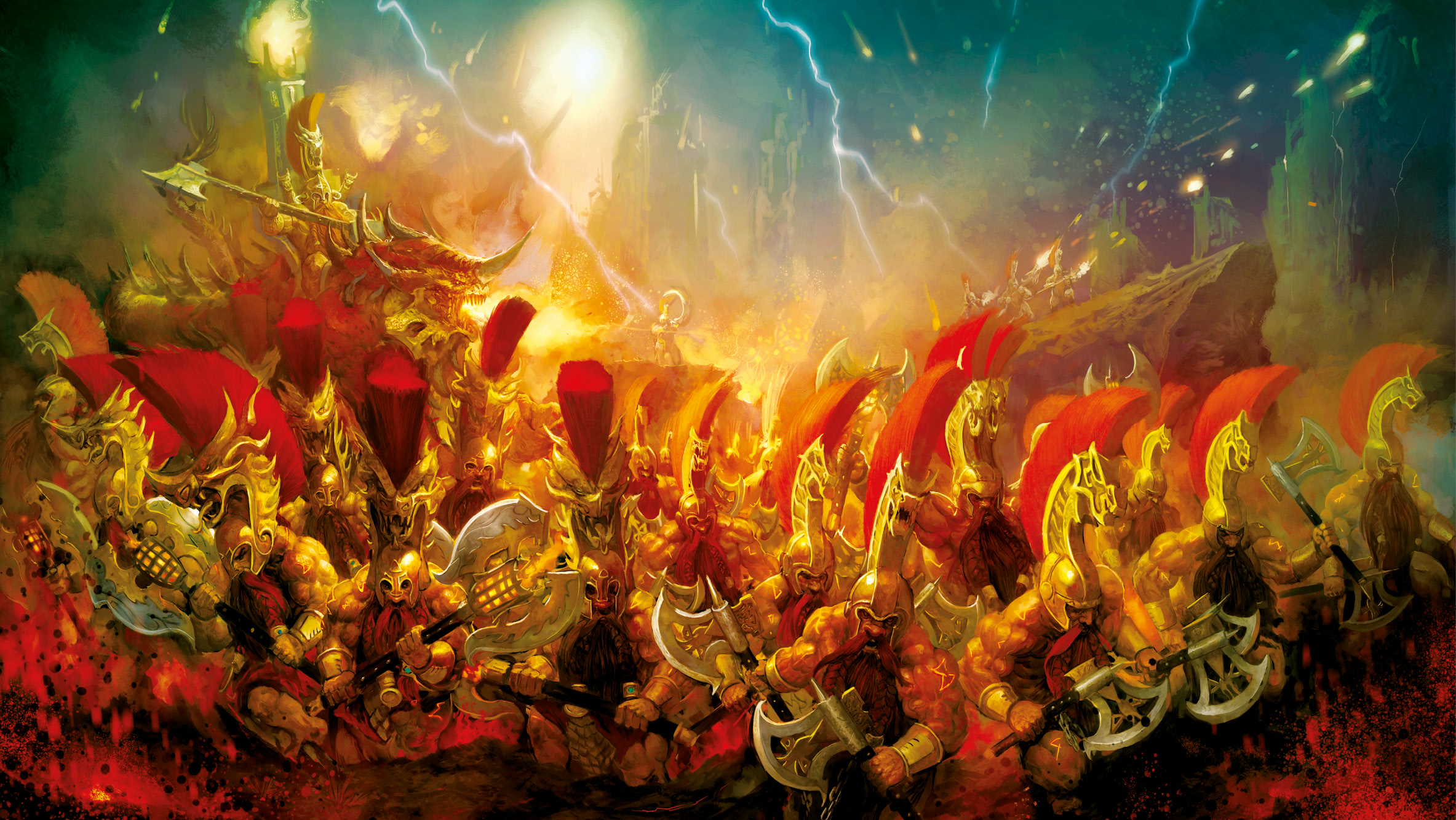 The next Manowar album cover? Nope, Duardin!
The next Manowar album cover? Nope, Duardin!
I’m not paid to pimp this game for Games Workshop, god knows they’ve rejected a job application from me more times than I can count. But I want to encourage people to not be so negative about this game, and give it a chance. For once, seeing a game in a vacuum, rather than comparing it to its former iteration, is the correct way to go.


